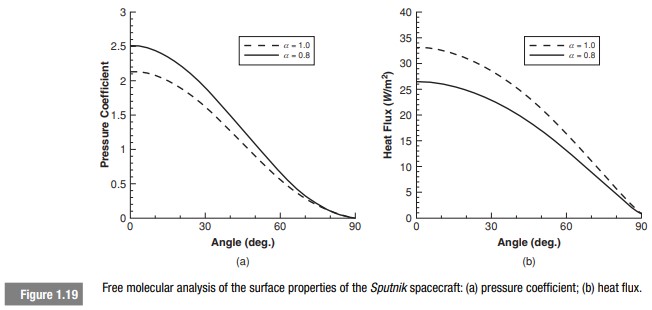Question 1.1: We use our expressions above to calculate the profiles of su...
We use our expressions above to calculate the profiles of surface pressure and heat transfer rate for the front surface of the S putnik spacecraft (a sphere with a diameter of 58.5 cm) orbiting Earth at an altitude of 220 km.
Learn more on how we answer questions.
Incident flow conditions:P_{i}= 5.01\times 10^{-5} Pa, T_{i}= 899 K, \rho _{i}= 1.37\times 10^{-10} {kg}/{m^{3} } , U_{i}= 7,780 {m}/{s}
Surface conditions: T_{r}= 500 K, \alpha = 0.8 and 1.0
Nondimensional parameters:
(i) Assuming a hard sphere diameter d= 4\times 10^{-10} m to evaluate the mean free path, and using the Sputnik diameter as the characteristic length scale:
• Knudsen number, Kn= 600, so the flow is free molecular.
(ii) Speed ratio, s_{3}=9 , so we are in the hypersonic limit.
Plots are provided in Fig. 1.19 of pressure coefficient and heat flux as a function of angle around the sphere, with zero being the stagnation point. These results show that
• The coefficient of pressure is increased at lower accommodation coefficient.
• The heat flux is reduced at lower accommodation coefficient.
